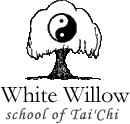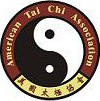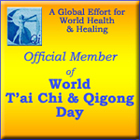Parkinson's Protocol
A Discussion of the Theoretical Mechanisms on how Qigong Produces Healing Effects in the Treatment of Parkinson's Disease
Introduction
Qigong (Chi Kung) is a 4000 year old, Chinese method of healing through patterned physical movements that induce organic healing responses within the organism. Related to Tai Chi Chuan, Qigong is much easier to perform, has more physical benefits and is almost exclusively a healing system. Both Qigong and Tai Chi Chuan have been clinically tested to reduce the motor and non-motor symptoms of Parkinson's disease while improving balance and mental states. These results were obtained by testing non-targeted forms of Tai Chi and Qigong without the understanding of how these modalities actually work within the organism.
The healing effects of Chinese Tai Chi and Qigong are attributed to the manipulation and balancing of the vital force energy called Qi (Chi) through patterned movements and breathing. Research is then conducted based upon the premise that the movements - taught by any instructor - possess the ability to produce benefits within the testing subjects. No effort is made to determine what Tai Chi or Qigong is actually doing to produce those results. Without the knowledge of how the effects are derived, we have no method of knowing what movements, systems or instructors can yield the greatest benefits for our efforts. When attempting to arrest and reverse the progress of a progressive disease, there is no time to waste investing in esoteric systems or unqualified instructors waiting for something to happen. The client may only get one chance at getting it right.
There are many different varieties and systems of Qigong. Each has their unique purpose and bio-dynamics. Therefore, for the purposes of this article, I will limit my discussion to specifically how the White Willow School of Tai Chi's SoundBody© Healing System and Tai Chi system produces their results.
Training Goals
- Increase the natural production of dopamine
- Facilitate the production of new neural tissue in the cerebral cortex and cerebellum
- Create and re-organize existing neural pathways for more optimum functioning
- Release physical tension from the body
- Strengthen the physical body
Training Techniques
- Autogenic relaxation and meditation techniques
- Qigong exercises to release physical tension, elongate muscles, realign physical structures, improve physical balance and build physical strength
- Qigong exercises to facilitate neuromuscular habitation
- Vibroacoustic toning and chanting
- Whole body breathing
Relaxation Training Methods
In the first two hours of training, all students will focus upon learning relaxation skills that they can use at any time during a normal day.
The first method is a physiological relaxation method which synchronizes both hemispheres of the brain inducing a theta state of meditation during normal waking consciousness. The theta state produces a "relaxation response" in the body that stops pain, production of catecholamine stress hormones, and circumvents the neural system for motor control via the connective tissue network; producing movement with a level of strength and speed not normally available to the student.
The second method of relaxation is autogenic "progressive muscular relaxation" where the student learns to directly relax specific muscle groups. With practice the student learns discreet control over "working" and "positional" muscles.
The third method is through breathing and visualization. The breathing involves using lower abdominal muscle groups in conjunction with energy visualization. The student combines all the relaxation methods with the breathing. The breathing becomes a biofeedback anchor that initiates the other two methods.
Movement Training Methods
The first level of Qigong movement training, The Seven Principle Exercises Qigong, focuses on exercises which incorporate the relaxation training with conditioning and stretching. Our program also focuses on training optimum biomechanical principles; retraining basic life movements to improve balance, release physical obstructions and prevent future physical degeneration.
Releasing physical tension and bracing within the body is paramount in producing health and reducing resistance to the body's natural ability to produce, circulate, and assimilate neural hormones within the brain.
The second level of Qigong movement training, the Movements of Peace Qigong, focuses upon ten simple stationary movements, which work specifically upon the central nervous system and the spinal system. This method is the most productive for healing. These ten exercises easily produce a "habitation response" within the brain while simultaneously stimulating neural/motor pathways within the arms and legs. Habitation response occurs when a movement goes on "autopilot" requiring no conscious control as the movement performs on its own volition.
Producing Dopamine
Habitation occurs within the cerebellum by performing repetitive, rhythmic movements. It takes approximately twenty minutes of movement to induce habitation in untrained individuals. Trained individuals can induce the state with less than ten minutes of movement. The habitation response triggers activity within the frontal lobes that then signal the nucleus acumens to release dopamine and endorphins. The release of these hormones is the process of a "runner's high". Unlike the runners high, the dopamine released from a Qigong-induced habitation response, is released in an environment free of physiological stress, oxygen deprivation and destructive cortisol hormones. The peaceful environment is conducive to absorption of the dopamine. The pleasant response encourages the brain to continue this balancing activity.
Distribution of Hormones
At this point we add Vibroacoustic toning to vibrate the skull, cleaning cerebral spinal fluid, enabling better transmission of neural transmitters across the synaptic gaps and enhancing re-uptake of those hormones. Vibroacoustic tones vibrate the sphenoid bone as well as stimulating the pituitary's dissemination of hormones.
Biofeedback Retraining of the Brain
Repetitive movement induces the habitation response to produce dopamine. Once the response is initiated, the movement should be continued for another ten to twenty minutes. This produces a training response that shortens the time of induction and lengthens the duration and volume of dopamine production. Combining breathing and chanting to the process creates physical and cognitive anchors to the dopamine production process. With training, the dopamine production will become induced by breathing alone. Eventually it will become an autonomic response.
Direct Cerebral Spinal Fluid Circulation
Spinal flexion and extension actions included in the Movements of Peace Qigong pump CSF from the lumbar reservoir upward into the brain. This CSF current directly massages the subthalmus nucleolus region that has been shown to produce the most positive motor benefits from deep brain stimulation. The CSF flow also directly stimulates the cerebellum. The current of CSF is essential and instrumental in moving brain-produced communication hormones out of the brain and into the bloodstream.
Neural-Regeneration
The movement exercises produce a demand upon the damaged sensory motor cortex of the Parkinson's patient. This increased demand requires the recruitment of neurons from other regions of the brain to take up the workload. Historically, this recruitment and re-training of existing neurons to produce compensatory motor pathways has been considered a successful goal of all physical therapy modalities used with the Parkinson's patient. Aerobic and stressful exercise has - in study after study - benefited the patients in this manner who have been capable of participating. However, Qigong can actually go beyond what normal exercise has accomplished.
Qigong, because of its gentle nature can be practiced for longer periods of time than normal exercise. This extended practice increases the demand upon the sensory motor cortex and the new recruited neurons. This new demand stimulates the brain to stop "paying overtime" and start "hiring new workers". The sensory motor cortex calls out to the undifferentiated stem cells within the base of the ventricle reservoirs to produce new, permanent neurons within the sensory motor cortex. This natural action is the mechanism, which creates the profound performance differences between amateur and professional athletes. The continued hours of training by professionals produces new brain within the skill regions, which allows for a deep level of nuanced performance unavailable to untrained individuals. Repetition combined with intention and passion creates new brain.
Qigong, beyond providing a means of repetitive motion for non-athletes, also creates the perfect environment for neural regeneration to occur. Traditional exercise develops its results by placing the organism in stress. The stress upon the organism forces it to accommodate by producing new muscle, blood vessels, etc. which tends to strengthen the organism. However, neural regeneration is not best accomplished in the hypoxic, acidic, stressful environment, which exercise normally creates. Qigong, as shown before, produces a peaceful, rhythmic environment within the brain, filling it with dopamine, endorphins, and growth hormones. The rhythmic currents of CSF help mobilize the stem cells to the site of demand while providing the nourishment and support necessary for them to take root in a previously damaged brain.
White Willow Qigong provides both cognitive and physiological processes to rewire, reorganize, and regenerate the brain consistent with existing studies in the field. The material within this thesis needs to be tested. However, there is enough evidence to assume there are many positive benefits to be derived by practicing Qigong.
Selecting a Qigong/Tai Chi System
Almost any Qigong and most Tai Chi practices - even when performed incorrectly and taught by amateur instructors - can provide benefit to the Parkinson's patient. The slow movement practice coupled with mindful awareness will induce a relaxation response; improving flexibility, balance, and a general feeling of well-being. However, very few Qigong and Tai Chi systems are capable by their design to produce the biodynamic actions necessary to induce the habitation response at a level to create a rapid transformation of the brain. Most common systems slosh the brain and body back and forth, and side to side. For transformation to occur the actions must be generated along the vertical axis. A skilled teacher can modify the common Tai Chi and Qigong movements to attain some level of vertical action.
Unlike the average Qigong/Tai Chi student, the Parkinson's patient has a time window in which to produce results. They do not have the luxury of waiting for results to unfold. Change must begin immediately and progress at a consistent pace. Therefore, the Parkinson's patient should interview the prospective teachers and schools with one simple question: "How are you going to change my brain function today?"
References
Train your mind, Change your Brain: How a New Science Reveals Our Extraordinary Potential to Transform Ourselves: 2007 Sharon Begley
Qigong exercise helps reducing the motor and non-motor symptoms of Parkinson's disease: A random controlled pilot study., Schmitz-Hubsch et. al.: Movement Disorders Volume 21,Issue 4, 2006
Meditation found to increase brain size: January 23, 2006, Harvard University Gazette
Pallidal vs Subthalamic Nucleus Deep Brain Stimulation in Parkinson's Disease, Archives of Neurology Vol. 62 No. 4, April 2005
The Role of biofeedback in Central Nervous System Plasticity. Bernard S. Brucker, PhD.ABPP, University of Miami School of Medicine, Miami, USA
Infinite Mind: Science of the Human Vibrations of Consciousness, 1996, Valerie V. Hunt, Ph.D.
Sing, Clean your Brain and Stay Sound and Sane, 1984, Karel F. Jindrak, M.D., Heda Jindrak, M.D.
Energy Medicine in Therapeutics and Human Performance, 2003, James Oschman, Ph.D.
This Is Your Brain on Music: The Science of a Human Obsession, 2006, Daniel J. Levitin,Ph.D.
Craniosacral Biodynamics Volumne 2, 2003, Franklin Sills
© May 19, 2007, Vincent J. Lasorso, Jr., Master Teacher





 Mailing List
Mailing List Sponsors
Sponsors